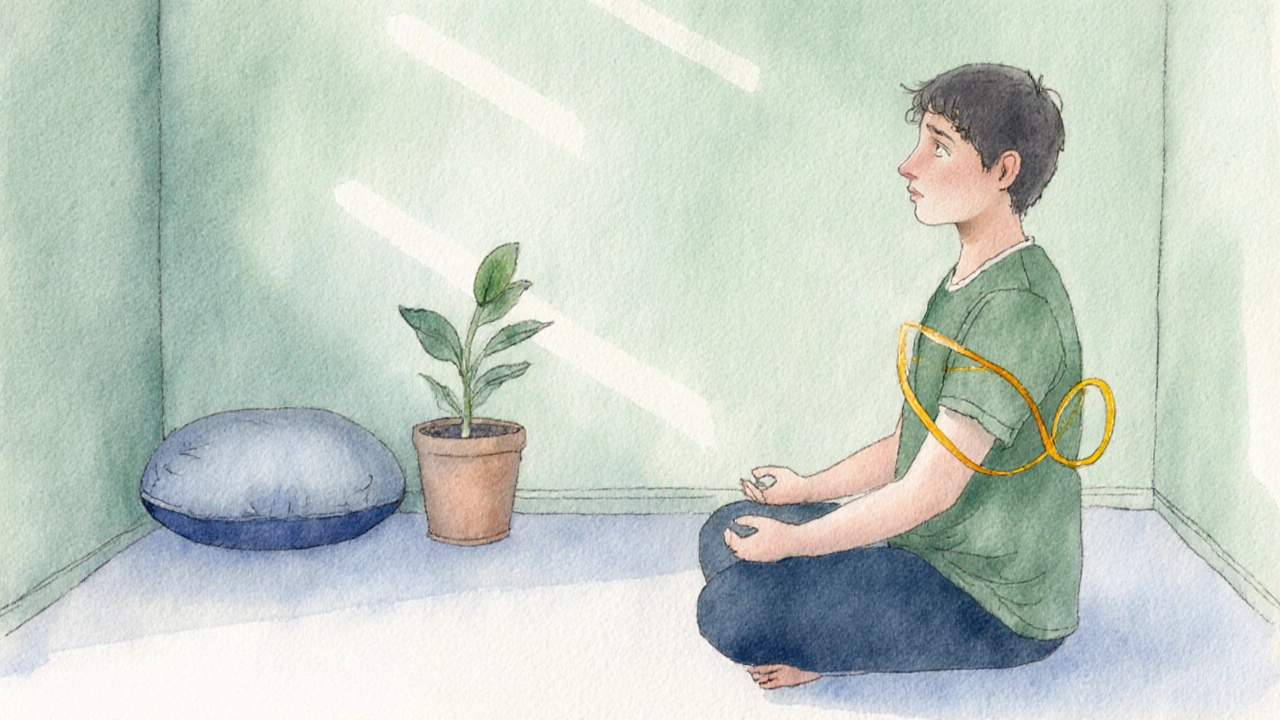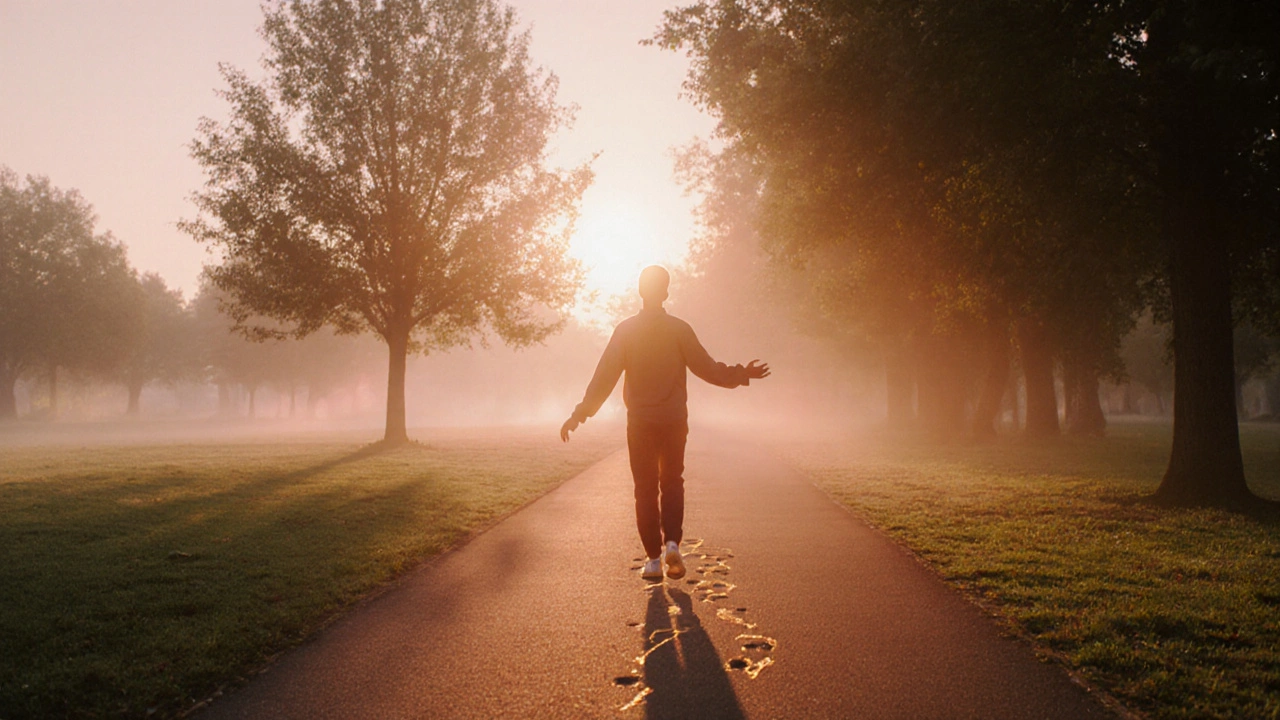Ever feel like your thoughts are a nonstop chatterbox that never quits? You’re not alone. The quest to empty your mind isn’t about becoming a robot; it’s about giving your brain a chance to hit the reset button so you can think clearer, feel calmer, and act with purpose.
Key Takeaways
- Emptying the mind is a skill you can train, not a mystical superpower.
- Four core techniques-breath awareness, body scan, mantra meditation, and walking meditation-cover most needs.
- Consistency beats intensity; a 5‑minute daily habit beats a 30‑minute erratic session.
- Track progress with simple metrics like mind‑wandering frequency or perceived stress.
- Common pitfalls (e.g., judging thoughts) can be sidestepped with easy adjustments.
What Does “Emptying the Mind” Really Mean?
People often picture a completely blank screen, but the brain never truly shuts off. The goal is instead to reduce the volume of mental chatter, allowing the default mode network-the brain’s autopilot mode-to calm down. When the default mode network quiets, you experience a mental space that feels more open, like a clear sky after a storm.
Mindfulness meditation is a practice that cultivates present‑moment awareness by observing thoughts, sensations, and emotions without judgment provides the framework for achieving that mental quiet. It’s not about forcing thoughts away; it’s about changing your relationship with them.
Why You’d Want to Empty Your Mind
Research from the University of Oxford (2023) shows a 30‑minute mindfulness session can lower cortisol-the stress hormone-by up to 20%. A quieter mind also improves attention regulation, making it easier to focus on tasks and make decisions. In everyday life, that translates to fewer distractions at work, better sleep, and a steadier mood.
Core Techniques to Quiet the Brain
Below are the most effective, evidence‑backed methods. Pick one to start, then add another once you feel comfortable.
1. Breath Awareness
Breath awareness involves focusing attention on the inhalation and exhalation cycle, using the breath as an anchor for the mind is the simplest entry point. Sit upright, close your eyes, and silently count each breath up to ten, then start over. When you notice a thought, label it “thinking” and gently bring focus back to the breath.
2. Body Scan
Body scan is a progressive attention exercise that moves from the toes to the crown of the head, noting sensations without trying to change them helps you notice tension you might otherwise ignore. Spend 5‑10 minutes systematically scanning each body part, observing warmth, tightness, or tingling. This practice grounds you in the present moment and reduces mental rumination.
3. Mantra Meditation
Mantra meditation uses a repeated word or phrase-such as “peace” or “om”-to occupy the mind’s verbal loop, easing intrusive thoughts works well if you find pure silence uncomfortable. Choose a word that feels calming, repeat it silently on each exhale, and let it fade naturally when thoughts arise.
4. Walking Meditation
Walking meditation combines the physical act of walking with mindful attention to each step, breath, and sensation under the feet is ideal for restless individuals. Walk slowly in a quiet space, feeling the heel‑to‑toe transition and syncing each step with your breath.
5. Progressive Muscle Relaxation
Progressive muscle relaxation involves tensing and then releasing muscle groups to create a wave of physical relaxation that signals the brain to quiet down can be a bridge between high‑energy activities and meditation. Start with your fists, hold for five seconds, release, then move up the body.
6. Visualization
Visualization guides the mind toward a calm scene-like a beach or forest-using vivid sensory details to displace mental noise is a powerful tool for anxiety. Spend a few minutes picturing the scene, incorporating sounds, smells, and textures.
7. Sensory Grounding
Sensory grounding anchors attention to immediate sensory input (what you see, hear, feel) to interrupt spiraling thoughts can be done anywhere. Name five things you see, four you hear, three you feel, two you smell, and one you taste.

Comparing the Techniques
| Technique | Time Needed | Ideal Setting | Best For |
|---|---|---|---|
| Breath Awareness | 5‑10 min | Chair or floor | Beginners, quick resets |
| Body Scan | 10‑20 min | Quiet room, lying down | Stress relief, sleep prep |
| Mantra Meditation | 5‑15 min | Any quiet spot | Those who like sound focus |
| Walking Meditation | 10‑30 min | Park, hallway | Restless minds, outdoor lovers |
| Progressive Muscle Relaxation | 10‑15 min | Bed or chair | Physical tension, pre‑sleep |
| Visualization | 5‑10 min | Any quiet place | Creative minds, anxiety |
| Sensory Grounding | 2‑5 min | Anywhere | Acute stress, panic moments |
Building a Daily Routine
- Choose a anchor technique (e.g., breath awareness) for the first week.
- Set a consistent time-first thing after waking works best.
- Start with 5 minutes; use a timer with a gentle chime.
- Gradually add a second technique after two weeks.
- End each session with a quick sensory grounding check.
Keeping a simple log (paper or app) helps you see patterns. Note the number of thoughts that drift away, your stress rating (1‑10), and any physical sensations.
Common Pitfalls & How to Avoid Them
- Judging yourself: If you label a session “failed” because you thought a lot, you reinforce the mental chatter. Reframe by saying, “I noticed thinking, which is the point.”
- Seeking total silence: Expecting a blank mind creates frustration. Accept thoughts as guests; gently guide them out.
- Inconsistent practice: Skipping days erodes the habit loop. Even a minute counts-better than nothing.
- Using the wrong environment: Noisy or cluttered spaces feed distraction. Pick a spot with minimal interruptions.

Measuring Progress
Quantify improvement without obsessing over numbers. Two practical metrics:
- Mind‑wandering frequency: After each session, count how many times you noticed your mind drifting. Aim for a reduction of 20% over a month.
- Perceived stress score: Rate your stress before and after a week of practice on a 1‑10 scale. A drop of 2 points signals real benefit.
Complement these with subjective signs-better sleep, easier focus, calmer reactions to challenges.
When to Seek Professional Guidance
If you notice overwhelming anxiety, persistent intrusive thoughts, or feel stuck after several weeks, consider a qualified mindfulness teacher or therapist. They can tailor techniques to your neurological makeup and help you navigate deep‑seated mental patterns.
Wrap‑Up
Emptying the mind isn’t a one‑time magic trick; it’s a skill you sharpen daily. Start small, stay consistent, and watch the mental fog lift. Soon you’ll find that moments of clarity become the norm rather than the exception.
How long should a beginner meditate to empty their mind?
Begin with 5 minutes of breath awareness once or twice a day. Consistency beats length-add a minute each week as it feels comfortable.
Can I empty my mind while working?
Yes. A quick 2‑minute sensory grounding break-notice five things you see, four you hear-can reset the mental chatter without stopping work.
Is it normal to feel bored during meditation?
Boredom often signals that your mind is used to constant stimulation. Treat it as a cue to return gently to your anchor breath or mantra.
Do I need special equipment?
No. A comfortable seat or a place to walk, a timer, and optionally a cushion are enough. The focus is on attention, not gear.
How quickly can I notice reduced stress?
Many people feel calmer after the first session, but measurable cortisol reduction typically appears after 2-3 weeks of regular practice.





